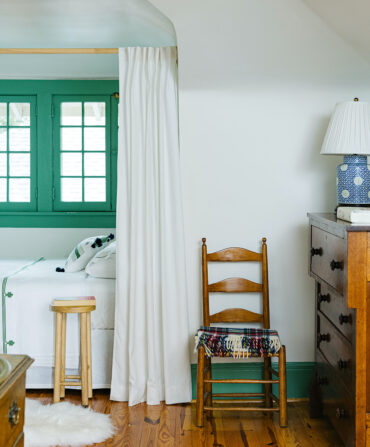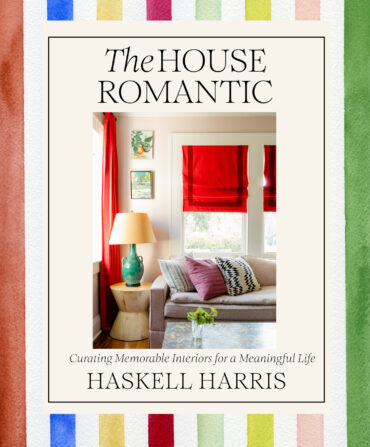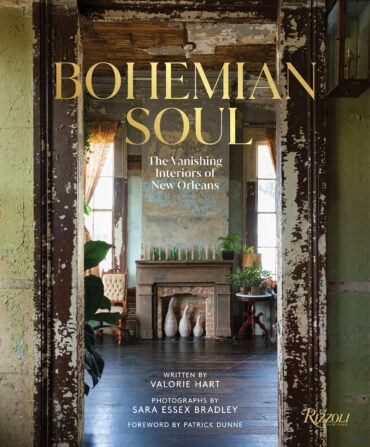Homeplace
The Museum Next Door
A Savannah town house tells its story through Lowcountry treasures
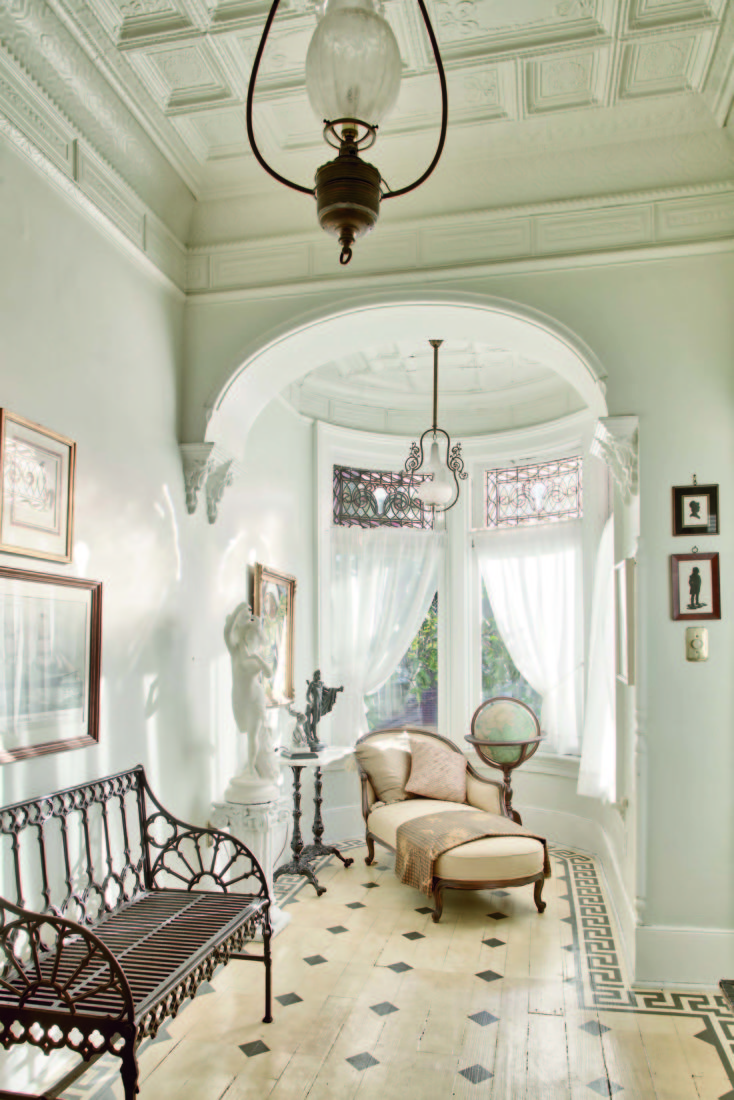
Photo: Richard Leo Johnson
It’s tempting to say that John Duncan has forgotten more about Savannah than the rest of us will ever know, except that after spending time with him, you suspect he has never forgotten anything, ever. The four-story Second Empire Baroque town house on Monterey Square where the retired history professor lives with his gracious wife of forty-one years, Ginger, contains more books, prints, sculptures, engravings, paintings, carvings, masks, and wondrous whatnot than some museums. Thousands of pieces hang on walls, artfully mingle on rare antique tables, fill cabinets, spill from one high-ceilinged room to the next. Not one of them comes without a story attached. Exploring the home, built in 1869, is like rummaging through Savannah’s attic.
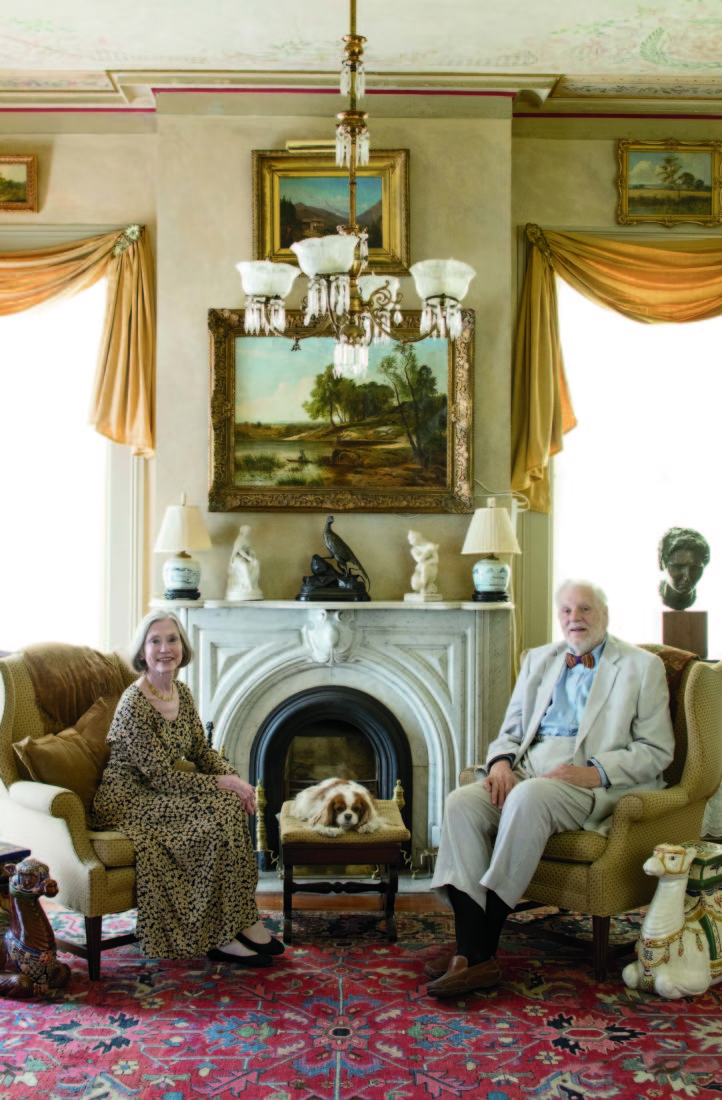
Photo: Richard Leo Johnson
The couple, with their Cavalier King Charles
spaniel, Emma, in the front parlor.
In the second-floor bay-windowed sunroom overlooking East Taylor Street, for instance, sits an imposing Gothic iron bench. “It was made in Czar Alexander’s imperial iron foundry outside St. Petersburg,” John says during an informal tour, “and brought over on the steamship Savannah in 1819. That was the first steamship to cross the Atlantic Ocean.” A towering six-foot-five white-bearded presence, John taught for thirty-one years at Armstrong State University in Savannah, and he still speaks in the measured cadence of the lecture hall, with strategic pauses and implied italics. “I was in pursuit of that bench for about forty years.” A circa-1860 lithograph of the steamship hangs over the bench, next to a portrait of the czar himself.
John and Ginger step into the master bedroom, John’s metal cane clicking on the pine floor, and he sits on the edge of another treasure, the intricately carved four-poster canopy bed that dominates the space. “Made in the West Indies about 1825, mahogany,” he announces, “and belonged to Jay Gould, the great financier, or robber baron, according to your point of view.” The bed came from Lyndhurst, Gould’s mansion overlooking the Hudson in Tarrytown, New York. “The last member of the Gould family to have that bed: Helen Drexel, a.k.a. Serena Dawes, if you’ve read the book or seen the movie. Scandalous old witch, she was.”
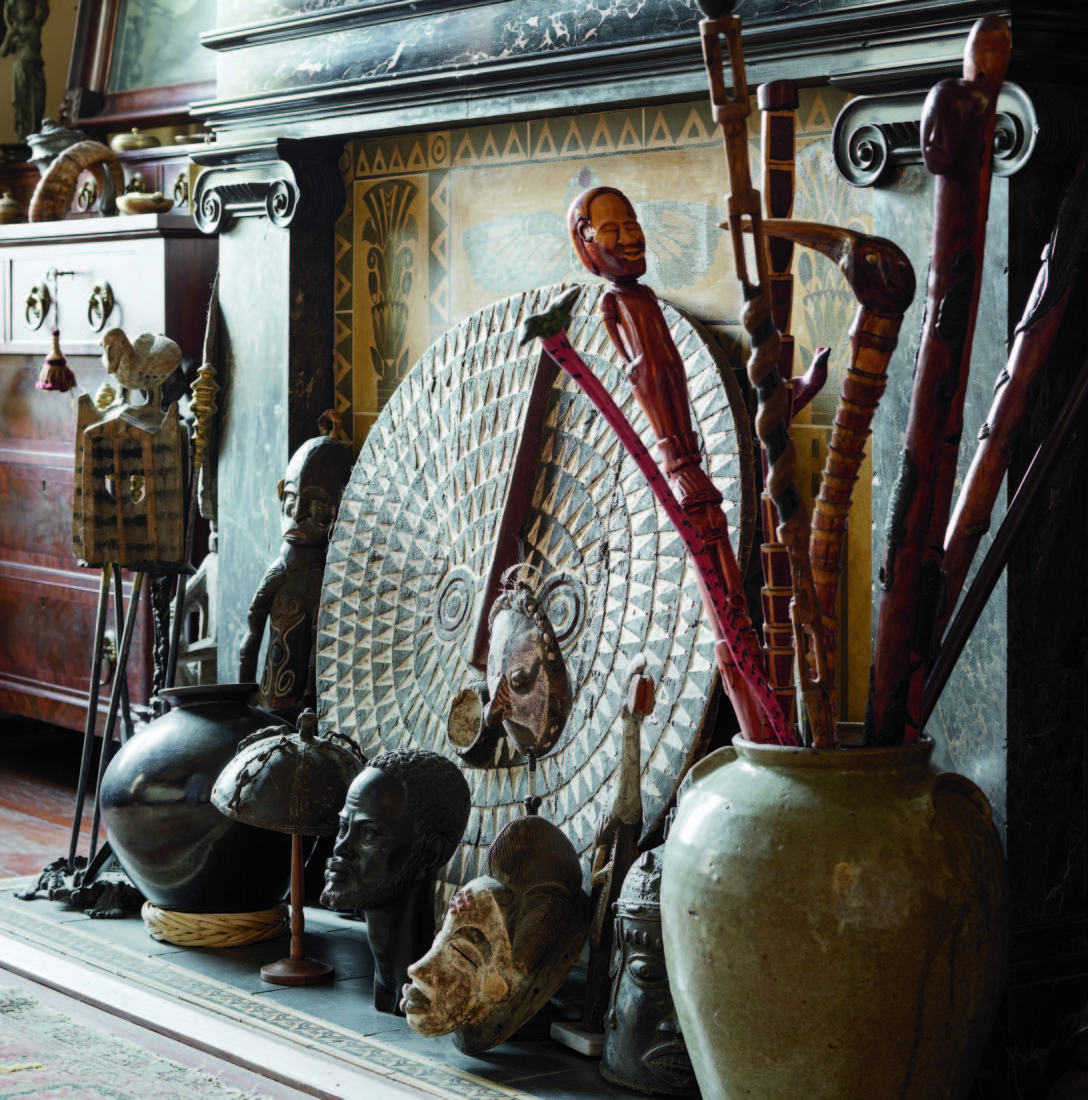
Photo: Richard Leo Johnson
Hand-carved canes, African masks, and more in the master bedroom.
This being Savannah, “the book” refers, of course, to Midnight in the Garden of Good and Evil, John Berendt’s 1994 more or less nonfictional best seller, which chronicles the city’s decadent quirks and has inspired millions of sightseers to flock to it. Berendt first knocked on the Duncans’ door in the early 1980s as he began his reporting—the book’s central figure, Jim Williams, lived (and committed the plot-driving murder) in the hulking Mercer House, just across the square—and he and the couple have remained close. Ginger is mentioned briefly in Midnight, and both of them appeared in Clint Eastwood’s film adaptation, as did Rosie, their Cavalier King Charles spaniel at the time (“She had a nonbarking role,” John says). Berendt has stayed many times with them on return trips to Savannah, and these reunions tend to add layers to the house’s ongoing narrative.
“Who was the Italian countess?” John asks Ginger at one point, on the back porch.
“Oh yes,” she replies. “She was in that second book that he did, about Italy. He brought an Italian countess to our oyster roast.”
John nods in recollection. “Her grandmother was the mistress of Edward VII.”
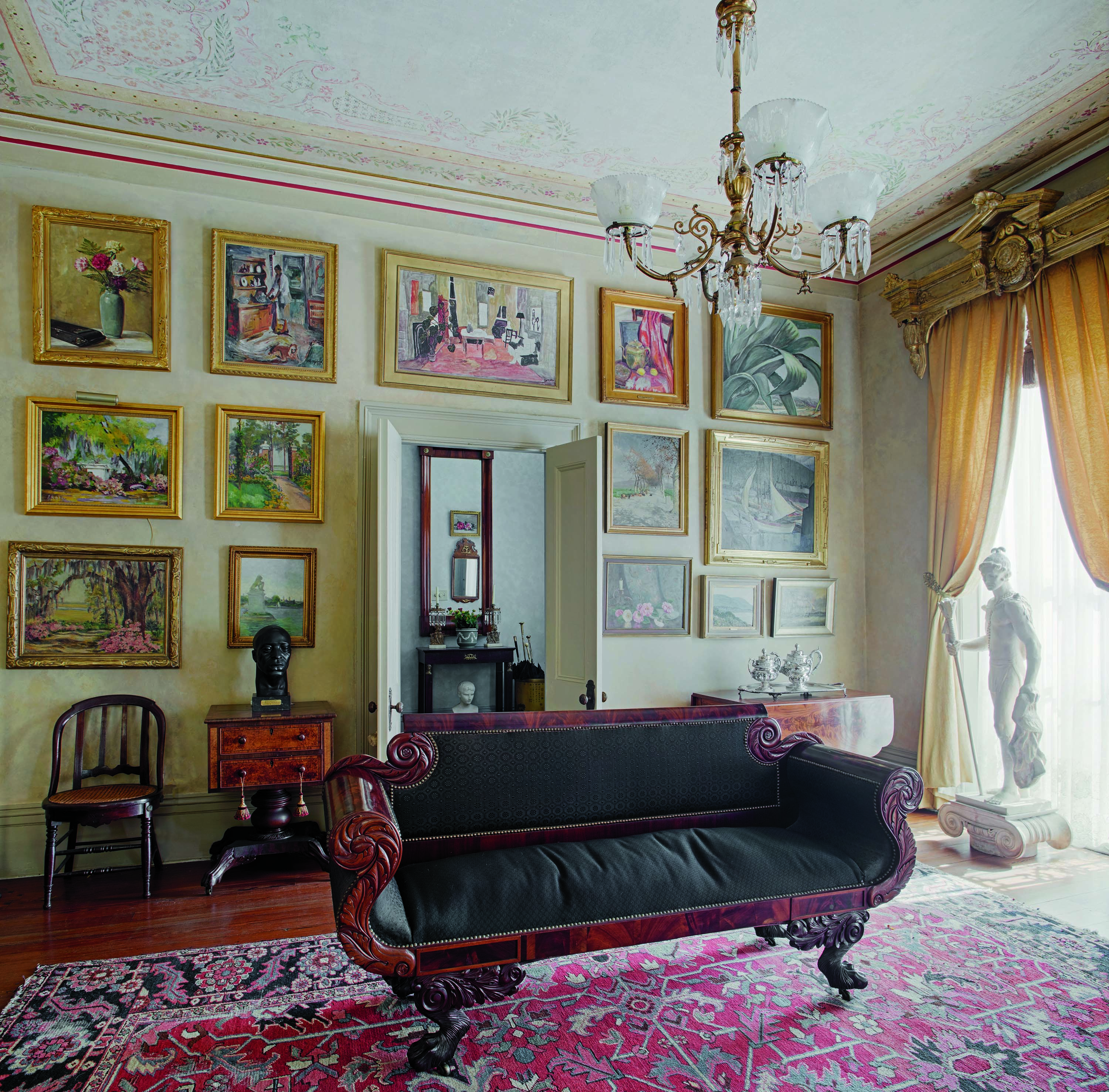
Photo: Richard Leo Johnson
The front parlor, with paintings by Savannah artists and a statue of a cacique of the Kiawah Indians.
That friendship has also fed one of the wide-ranging collections the Duncans have pieced together since moving in, in 1977: dozens of foreign-language editions of Midnight, along with sample chapters Berendt sent them as he wrote. “I’m a collector of anything Savannah,” John says. “I don’t know if there’s a collecting gene, but if there is, I have it.” A twelfth-generation Charlestonian, he began accumulating steel pennies at age six and bought his first painting, from Charleston’s Gibbes Museum of Art, as a teenager. He and Ginger bought the town house—for all of $36,000—the year before they were married. “It was just awful,” she says. “I can’t imagine how we saw through that.” “There was no plumbing, no kitchen, no bathrooms,” John says. “And they had painted the outside electric swimming-pool blue. Everybody in the neighborhood claimed credit for calling the city authorities.”
Over the decades, the hodgepodge of contents has steadily expanded, incorporating not just Savannah but also relics of the Lowcountry and beyond: Society portraits by Anne Taylor Nash, an artist from whose husband’s forebears Nashville took its name, near a painting of a local blues singer named Tedd Browne (“Used to play at Hester’s Martinique here in Savannah,” John says. “They had sawdust on the floor”). A mammoth dollhouse in the parlor, fashioned by a local cabinetmaker in 1985, modeled after Virginia’s Westover Plantation. More than a hundred racks of antlers on the porch from deer felled by John’s father fifty or sixty years ago on South Carolina’s Edisto Island, a couple of them crowned with nests of the mourning doves that return each year.
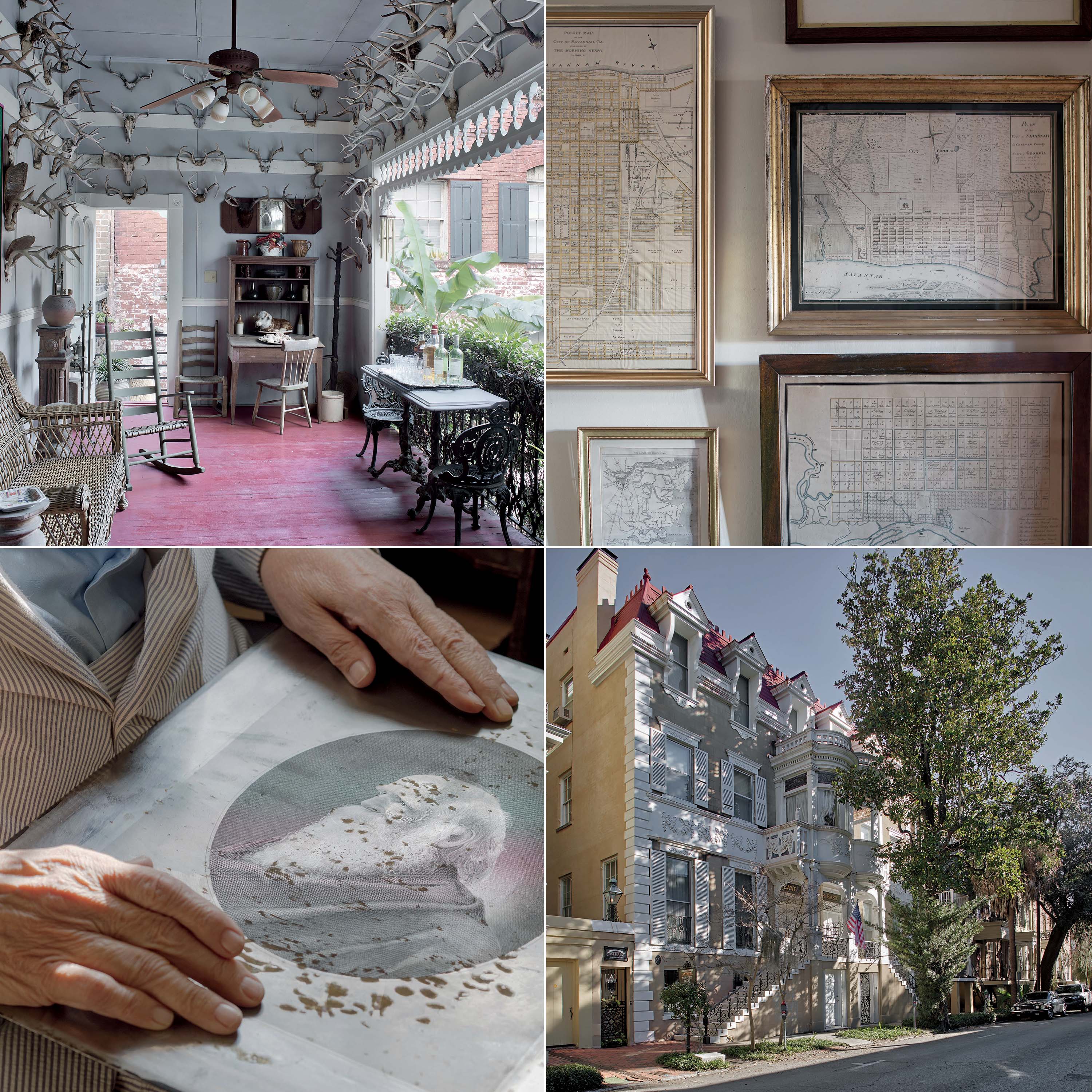
Photo: Richard Leo Johnson
Clockwise from top left: The back porch overlooking the courtyard; a hallway lined with rare maps; a view of the town house from Monterey Square; a steel plate of the nineteenth-century American poet William Cullen Bryant.
The compact courtyard features a reproduction of Antonio Canova’s sculpture of Cupid and Psyche that was exhibited in 1915 at San Francisco’s Panama-Pacific International Exposition, now flanked by banana plants that, in good years, supply ingredients for bananas Foster. A stout waist-high early-1800s rice mortar and pestle rests near a chunk of petrified wood used as a doorstop. There are Audubon prints from first editions of his books, and a wall of Savannah and Georgia maps dating back as far as 1591. An exquisite series of prints of magnolia blossoms by Mercedes Erixon Hoshall lines a staircase (“When she died,” John says, “her daughter flew into Charleston and threw these out on the street for the trash man to pick up”). Their fabric “kerchief map” of Washington, D.C., from the 1790s, during Washington’s presidency, is one of only four. The Duncans have some fifty African American hand-carved walking canes, and as many Gullah baskets. An unsigned and undated folk-art painting in the dining room depicts a black banjo player in a three-piece suit; John paid $100 for the piece, which came from near Florida’s Suwannee River, decades ago (“It could walk into any folk museum anywhere”).
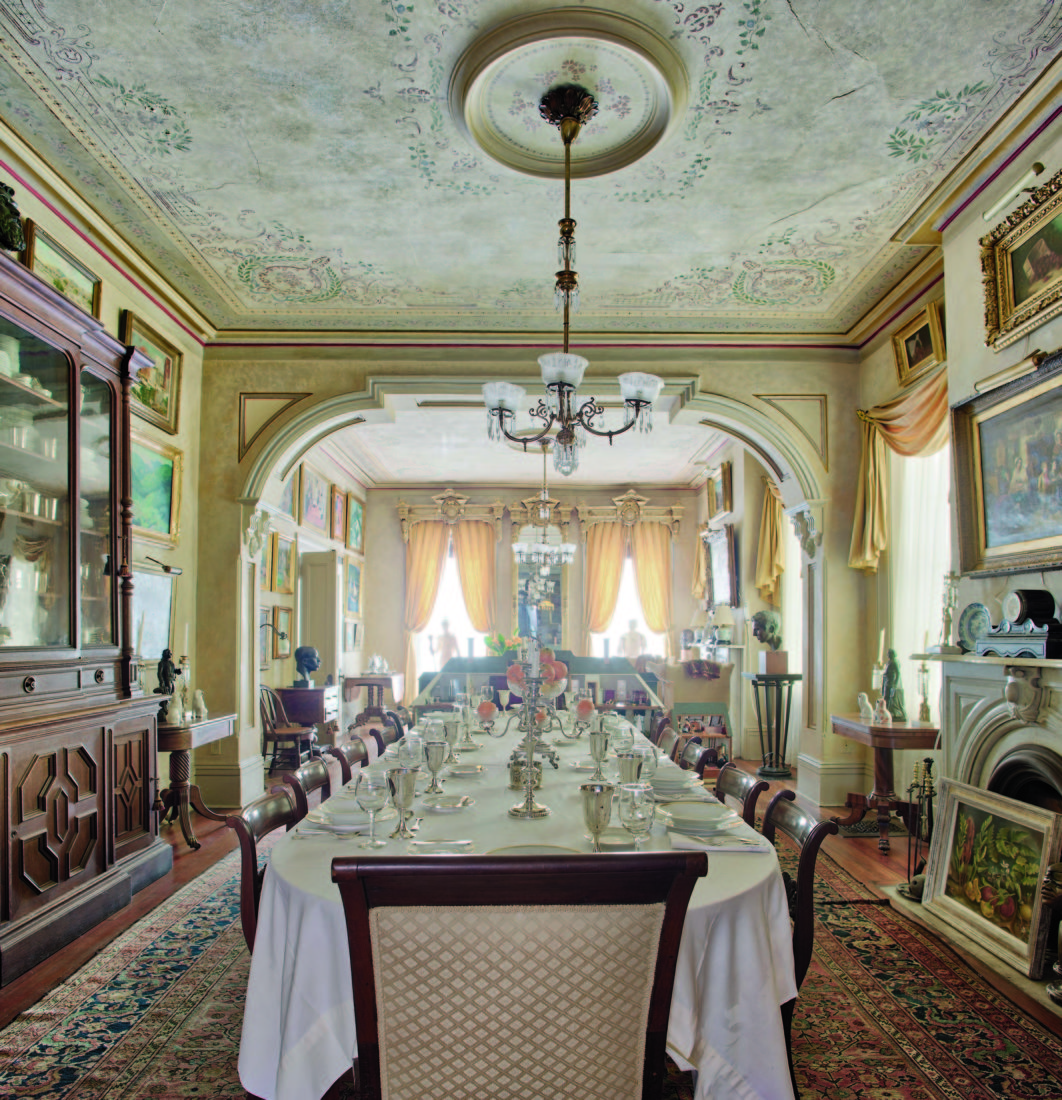
Photo: Richard Leo Johnson
The dining room features a restored stenciled ceiling.
Since 1983, this bounty has overflowed into the couple’s shop, V&J Duncan—Ginger’s given name is Virginia—itself brimming with antique maps, prints, and books. People who wander into the shop, located downstairs, have become the Duncans’ lifelong friends. “It has opened us up to the world,” John says. The couple has donated pieces to Savannah institutions as varied as the Telfair museum of art and the Crystal Beer Parlor, a restaurant that first opened in 1933, sharing the largesse that Savannah has long shared with them.
“If you’re not surrounded by beauty,” John says with a shrug, “why bother to live?”


